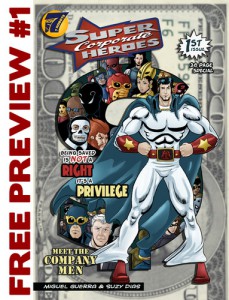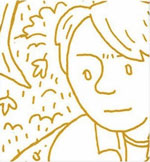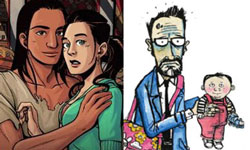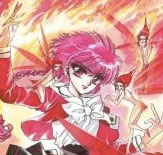 Super Corporate Heroes is a satirical comic that centers on a company called Superhero, Inc. This company is a Fortune 500 company that has superheroes who save people in exchange for money. Anyone who needs saved by the superheroes must pay these superheroes through rescue insurance. This rescue insurance is expensive. As a result of this expensive rescue insurance, only rich people have a better chance of being saved, while the poor people have less of a chance of being saved. Also, the superheroes with the stronger powers earn more money and the superheroes with lesser powers make less money. Super Corporate Heroes is the comic that made me think about what it really means to save people.
Super Corporate Heroes is a satirical comic that centers on a company called Superhero, Inc. This company is a Fortune 500 company that has superheroes who save people in exchange for money. Anyone who needs saved by the superheroes must pay these superheroes through rescue insurance. This rescue insurance is expensive. As a result of this expensive rescue insurance, only rich people have a better chance of being saved, while the poor people have less of a chance of being saved. Also, the superheroes with the stronger powers earn more money and the superheroes with lesser powers make less money. Super Corporate Heroes is the comic that made me think about what it really means to save people.
One of the superheroes who work for Superhero, Inc. is a mysterious hero called The Shroud. The secret mission he is on makes this hero a very weird guy. Another Superhero Inc. employee is American Icon, who is an indestructible playboy. American Icon earns the most money due to the fact that he is indestructible and is the most called on for help. There is also Ms. Titanium, who does a lot of work, but is under appreciated for her work. Superhero, Inc also has a veteran worker called Major America, who has been fighting crime for a very long time. Superhero, Inc. also has a worker who is the last of the Greek gods. This god is named Olympia. Finally, we have a superhero named Blue Collar. Blue Collar has a low salary due to the fact that he has to pay child support and alimony.
The Superhero, Inc. heroes are soon challenged by evil super villains, who begin to destroy New York City. This destruction of New York City sucks the workers of Superhero, Inc. into the super villains’ corruption.
Super Corporate Heroes is written and lettered by Suzy Dias. The artist is Miguel Guerra, who also co-writes the comic with Suzy Dias. The artwork is beautiful and is also sets the perfect mood for the mood of the comic. The coloring of the artwork has a perfect balance between gloomy and bright. This is good for a story that is satirical. The content of this comic is dark, but is expressed with humor.
The first issue shows a burning building on the first panel. The panel shows a man in a green shirt hanging off the building’s ledge. He is holding on for dear life and is about to fall to his death. He is yelling for help. There is so much smoke that no one can see him. As the man in the green shirt starts to give up, The Shroud shows and says, “looks like you could use some help.” As the man in the green shirt thanks God that The Shroud came to his rescue, The Shroud says to the man in the green shirt, “first I need to explain the terms of our contract before I can legally rescue you.”
According to Superhero, Inc. $1000 gets one 5 rescues for a month and $6000 covers one for a year. Once a person is saved, the superhero takes the saved person’s credit card. Then, the superhero swipes the credit card with a portable swipe machine. Then, the saved person is given a receipt. After that, the saved person is sent a button in the mail. The saved person has to wear this button to be saved again.
Both the people in danger and the superheroes are in rough situations in this story. The poor people in danger don’t want to be treated like villains just because they can’t afford to be saved. However, the superheroes want to make a living off of their talent and be able to have roofs over their heads and food on their tables. Super Corporate Heroes is an interesting comic book that will make you think and laugh.
You can view the first issue of Super Corporate Heroes for free at www.7robots.com/comics.
 When you think of ’80s comics, Berke Breathed’s Bloom County is one that belongs in the pantheon with Watchmen and Dark Knight. It pushed many boundaries on the ever-conservative funnies page, from modern dating to issue advocacy, balancing cumudgeonliness with exuberance and hope. But how much of a hurdle are the pop culture references for modern readers? Is it still worth reading? Tim and Patrik dust off their memories and try to look at this classic strip with new eyes.
When you think of ’80s comics, Berke Breathed’s Bloom County is one that belongs in the pantheon with Watchmen and Dark Knight. It pushed many boundaries on the ever-conservative funnies page, from modern dating to issue advocacy, balancing cumudgeonliness with exuberance and hope. But how much of a hurdle are the pop culture references for modern readers? Is it still worth reading? Tim and Patrik dust off their memories and try to look at this classic strip with new eyes.






 An experiment with magic brings a mummy to life! And… wow, is he a hunk! Dan Jolley and our friend Natalie Nourigat bring us Wrapped Up in You!
An experiment with magic brings a mummy to life! And… wow, is he a hunk! Dan Jolley and our friend Natalie Nourigat bring us Wrapped Up in You!
